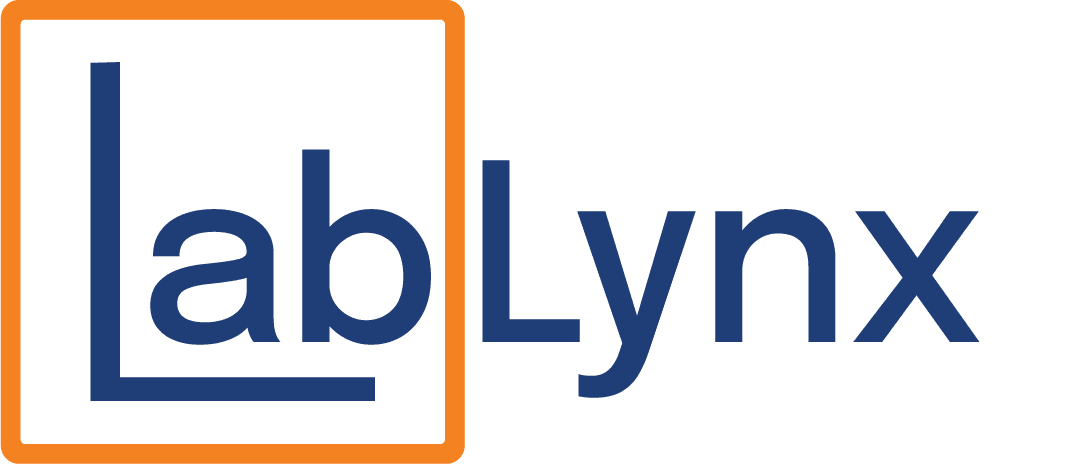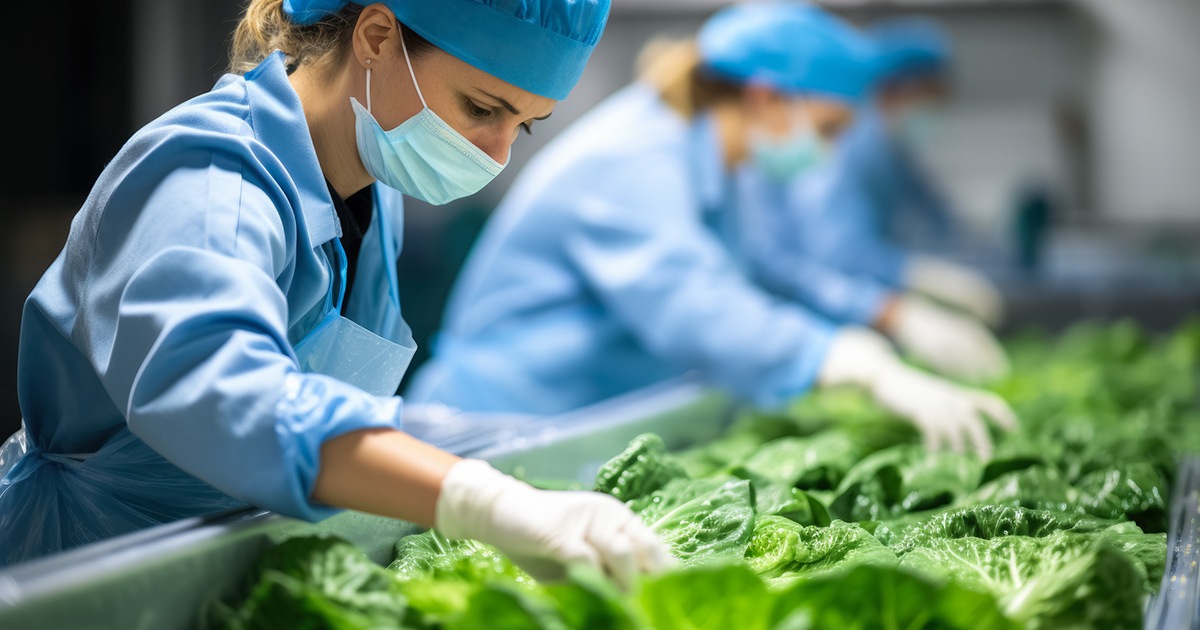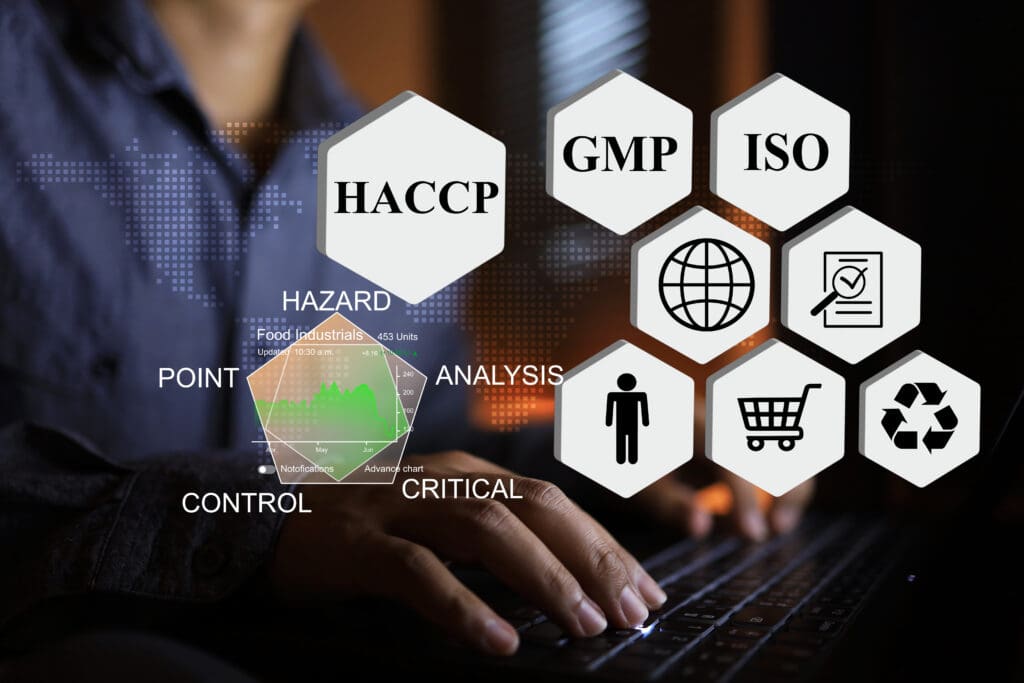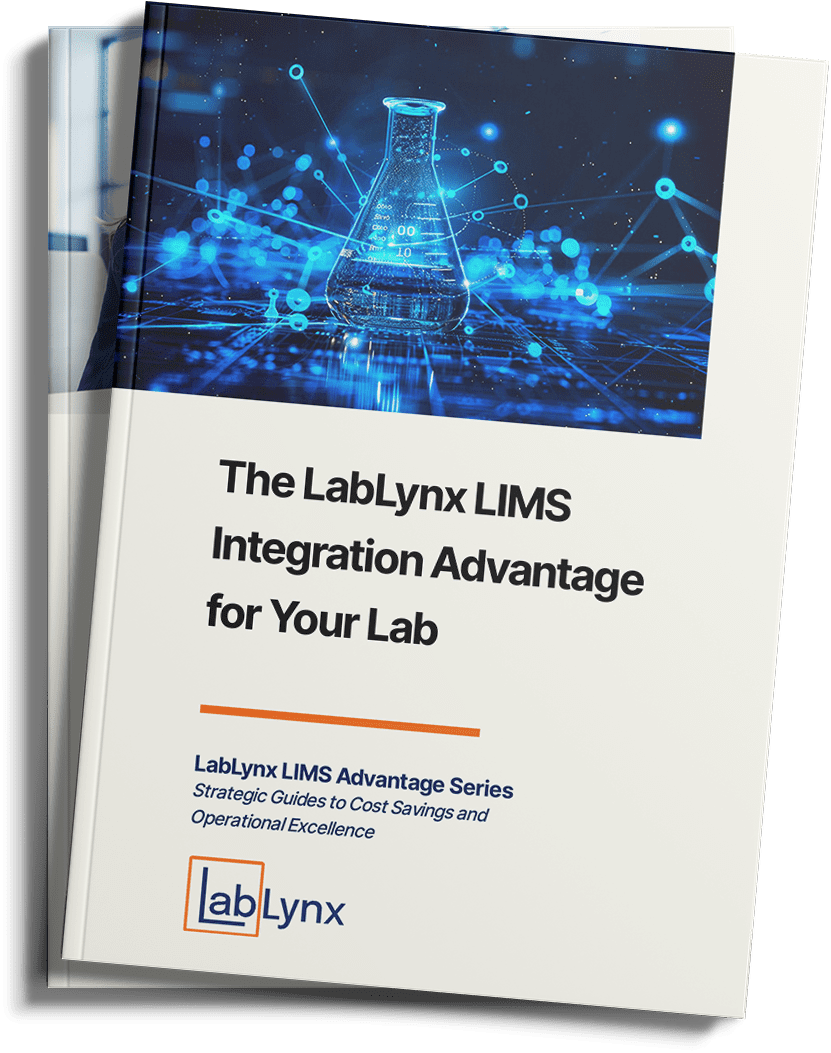Globally recognized food safety standards
Like other industries, the food and beverage industry depends on well-defined and -justified standards to better ensure the quality of their products. Implementing and maintaining conformance to internationally recognized and benchmarked food safety standards benefits the food and beverage organization in a number of ways[1][2]:
- It increases customer confidence through the organization’s audited certification to the standard, taking the place of customers’ own auditing methods to ensure quality and authenticity, in turn reducing time and costs.
- It drives organizations to better monitor their activities for non-conformities, identify root causes, and develop preventative controls, while clearly reporting such efforts to customers, further reducing the need for customer audits.
- It better ensures a rigorous and comprehensive approach to product safety, quality, integrity, and legality, in many cases meeting or exceeding local, state, federal, and/or international legislative requirements.
- It drives organizations to better vet their suppliers and service providers for meeting required food safety management practices.
- It enables organizations to better demonstrate auditable compliance with modern food safety management practices.
- It allows organizations to limit product recalls, reduce customer complaints, and better protect their brand.
As such, food and beverage researchers and manufacturers adopt standards from one or more organizations around the world, not only to benefit their operations but also meet or exceed regulatory requirements for their industry. What follows are a few examples of more critical standards and guidelines that apply to the food, beverage, and feed industries.
Codex Alimentarius
The Codex Alimentarius is a collection of internationally recognized food and feed standards and guidelines developed as a joint venture between the United Nation’s Food and Agricultural Organization (FAO) and the World Health Organization (WHO).[3] The Codex “is intended to guide and promote the elaboration and establishment of definitions and requirements for foods to assist in their harmonization and in doing so to facilitate international trade.”[4] Scope of the standards is broad, covering food hygiene; food additives and contaminants, including pesticides and drugs; packaging and labelling; sampling and analysis methods; and import and export inspection and certification.[4] It’s not unusual for governments to approach the FAO seeking help with harmonizing national legal frameworks of food safety with the Codex Alimentarius.[5] Among the Codex, some of the more broadly useful standards include General Principles of Food Hygiene (CXC 1-1969)[6], General Standard for Contaminants and Toxins in Food and Feed (CXS 193-1995), and General Methods of Analysis for Contaminants (CXS 228-2001).[7]
Hazard analysis and critical control points (HACCP)
The HACCP system has been adopted and integrated in various ways over the years[8], but at its core, the system directs organizations to focus on key areas or “critical control points” (CCPs) of vulnerability and hazard within the production process and mitigate their impact on overall food safety.[3] Though the seeds of HACCP go back to the 1970s, it wasn’t until the mid-1990s that it began finding its way into formal regulatory structures in the United States, first codified as 9 CFR Parts 304, 308, 310, 320, 327, 381, 416, and 417 in July 1996.[8][9] HACCP also found its way into other standards benchmarked by the GFSI.[8] The concept of HACCP has perhaps changed slightly over the years, but the main principles remain[3]:
- Conduct a hazard analysis.
- Identify CCPs.
- Establish critical limits for those CCPs.
- Establish monitoring procedures for those CCPs.
- Establish corrective action for failed limits.
- Establish verification procedures.
- Establish record keeping and documentation procedures.
International Featured Standards (IFS)
The IFS framework is made up of a group of eight food and non-food standards, covering various processes along the food supply chain. IFS Management, who is responsible for the standards, notes that “IFS does not specify what these processes must look like but merely provides a risk-based assessment”[10] or “uniform evaluation system”[3] for them. Organizations such as food manufacturers and logistics providers can certify to the standards. Some of the more relevant to food and beverage laboratories include IFS Food (for food manufacturers), IFS Global Markets Food (for food retailers), IFS PACsecure 2 (for packaging manufactures), and IFS Global Markets PACsecure (for packaging suppliers).[11]
International Organization for Standardization (ISO) 22000
The ISO 22000 series of standards addresses how a food safety management system should be set up and operated, and how organizations can be certified to the standard by a third-party auditor.[26] ISO 22000 is based off the ISO 9000 family of quality management system standards and, like other standards, incorporates elements of HACCP.[8] The standard claims to be advantaged compared to other standards due to its comprehensive applicability across an entire organization, and across the entire food chain.[27]
Regulations and laws around the world
The safety and quality of food is a high priority for most countries around the world, though how that safety and quality is regulated and legislated varies, sometimes significantly. The following subsections briefly address a few primary regulations and legislation enacted in a variety of countries around the world. (It is beyond the scope of this FAQ to address them all.) Similarities among the countries may be seen in their goals, but it should be noted that differences—significant and nuanced—exist among them all in regards to regulatory approaches to sampling, testing, risk, and importing[12][13][14], which should not be surprising given the cultural, political, and functional differences across regions and nations of the world.[12]
Food Safety Law – China
The Food Safety Law is described as “the fundamental law regulating food safety in China.”[15] Enacted in 2009 and revised in 2015 and 2021, the Law “builds up the basic legal framework for food safety supervision and management” and “introduces many new regulatory requirements,” including “not only general requirements applicable to food and food additives, but also specific requirements for food-related products and other product categories.”[15] Among these activities, the Law describes how food testing laboratories shall conduct their activities, from accreditation and sampling to testing and reporting.[16]
Food Safety Modernization Act (FSMA) and other acts – United States
The Food Safety Modernization Act of the United States was signed into law in January 2011, giving the US Food and Drug Administration (FDA) more regulatory authority to address the way food is grown, harvested, and processed.[8][17] It has been described by the FDA as “the most sweeping reform of our food safety laws in more than 70 years.”[17] The FSMA, at its base, has five key aspects, addressing preventive controls, inspection and compliance, safety of food imports, mandatory recall response, and food partnership enhancement.[17] However, FSMA continues to evolve, with additional rules getting added since its enactment, including rules about record management, good manufacturing practice (GMP) for human food and animal feed, and laboratory accreditation (referred to as the LAAF Rule).[18]
Another important regulatory body in the US is the Food Safety and Inspection Service (FSIS), which is overseen by the US Department of Agriculture (USDA). The FSIS and its authority to regulate are derived from three different acts: the Federal Meat Inspection Act of 1906, the Poultry Products Inspection Act of 1957, and the Egg Products Inspection Act of 1970.[19] The FSIS has developed its own regulatory requirements for meat, poultry, and egg products, including for inspections, imports and exports, labeling, and laboratory testing.[20][21][22]
Safe Food for Canadians Act (SFCA) – Canada
In November 2012, the SFCA was enacted to place regulatory “focus on prevention to ensure a food that is imported, exported or shipped from one province to another, is manufactured, stored, packaged and labelled in a way that does not present a risk of contamination.”[23][47] Though Canadian Food Inspection Agency (CFIA) enforcement of the SFCA’s regulations didn’t start until January 2019[23], the consolidation of 14 sets of existing food regulations by the SFCA has managed to improve consistency, reduce administrative burden, and enable food business innovation.[25] An interpretive guide published by the CFIA, Understanding the Safe Food for Canadians Regulations: A handbook for food businesses, summarizes and explains some of the nuances of the SFCA and its 16 parts on matters such as trade, licensing, preventive controls, packaging and labeling, and traceability.[25]
References
- Pavlović, A. (26 June 2017). “What is BRC? Global food safety standard explained”. Ideagen Blog. Ideagen Limited. Retrieved 17 January 2024. https://www.ideagen.com/thought-leadership/blog/what-is-brc-global-food-safety-standard-explained
- “BRCGS – British Retail Consortium Global Standard” (PDF). Perry Johnson Food Safety Consulting, Inc. April 2020. Retrieved 17 January 2024. https://www.pjfsc.com/Downloads/BRC-Overview.pdf
- “Food Safety and Quality Regulations: A Guide to Global Standards” (PDF). Eagle Product Inspection. May 2019. Retrieved 17 January 2024. https://vertassets.blob.core.windows.net/download/45fe7af4/45fe7af4-0500-4163-bd2b-5dd34e824bfd/eagle_wp_food_safetyquality_regulations_guide_a4_en.pdf
- “About Codex Alimentarius”. Food and Agricultural Organization. 2022. Retrieved 17 January 2024. https://www.fao.org/fao-who-codexalimentarius/about-codex/en/#c453333
- “Food laws & regulations”. Food and Agricultural Organization. 2022. Retrieved 17 January 2024. https://www.fao.org/food-safety/food-control-systems/policy-and-legal-frameworks/food-laws-and-regulations/en/
- “Codes of Practice”. Codex Alimentarius. Food and Agricultural Organization. 2022. Retrieved 17 January 2024. https://www.fao.org/fao-who-codexalimentarius/codex-texts/codes-of-practice/en/
- “Contaminants”. Codex Alimentarius. Food and Agricultural Organization. 2022. Retrieved 17 January 2024. https://www.fao.org/fao-who-codexalimentarius/thematic-areas/contaminants/en/
- Weinroth, Margaret D; Belk, Aeriel D; Belk, Keith E (9 November 2018). “History, development, and current status of food safety systems worldwide” (in en). Animal Frontiers 8 (4): 9–15. doi: 10.1093/af/vfy016. ISSN: 2160-6056. https://academic.oup.com/af/article/8/4/9/5087923
- “61 FR 38806 – Pathogen Reduction; Hazard Analysis and Critical Control Point (HACCP) Systems”. Federal Register. U.S. Government Publishing Office. 25 July 1996. Retrieved 17 January 2024. https://www.govinfo.gov/app/details/FR-1996-07-25/96-17837/summary
- “IFS: Global Safety and Quality Standards”. IFS Management GmbH. Retrieved 17 January 2024. https://www.ifs-certification.com/en/
- “IFS Food”. IFS Management GmbH. Retrieved 17 January 2024. https://www.ifs-certification.com/en/food-standard
- Buzby, J.C.; Mitchell, L. (1 November 2003). “Food Safety and Trade: Regulations, Risks, and Reconciliation”. Amber Waves. U.S. Department of Agriculture, Economic Research Service. Retrieved 17 January 2024. https://www.ers.usda.gov/amber-waves/2003/november/food-safety-and-trade-regulations-risks-and-reconciliation/
- U.S. Government Accountability Office (February 2005). “Food Safety: Experiences of Seven Countries in Consolidating Their Food Safety Systems”. Retrieved 17 January 2024. https://www.gao.gov/products/gao-05-212
- Whitworth, J. (22 February 2022). “Report finds food testing policies different between countries”. Food Safety News. Retrieved 17 January 2024. https://www.foodsafetynews.com/2022/02/report-finds-food-testing-policies-different-between-countries/
- Food and Agriculture Organization of the United Nations (29 April 2021). “Food Safety Law (2021)”. Law and Environment Assistance Platform. United Nations Environmental Programme. Retrieved 17 January 2024. https://leap.unep.org/en/countries/cn/national-legislation/food-safety-law-2021
- “China’s Food Safety Law (2015)” (PDF). GAIN Repo. U.S. Department of Agriculture. Retrieved 17 January 2024. https://apps.fas.usda.gov/newgainapi/api/report/downloadreportbyfilename?filename=Amended%20Food%20Safety%20Law%20of%20China_Beijing_China%20-%20Peoples%20Republic%20of_5-18-2015.pdf
- “Food Safety Modernization Act and Animal Food”. U.S. Food and Drug Administration. 27 July 2023. Retrieved 17 January 2024. https://www.fda.gov/animal-veterinary/animal-food-feeds/food-safety-modernization-act-and-animal-food
- “FSMA Rules & Guidance for Industry”. U.S. Food and Drug Administration. 20 September 2023. Retrieved 17 January 2024. https://www.fda.gov/food/food-safety-modernization-act-fsma/fsma-rules-guidance-industry#rules
- Food Safety and Inspection Service (21 February 2018). “Our History”. U.S. Department of Agriculture. Retrieved 17 January 2024. https://www.fsis.usda.gov/about-fsis/history
- “9 CFR Part 412 – Label Approval”. Code of Federal Regulations. 14 December 2023. Retrieved 17 January 2024. https://www.ecfr.gov/current/title-9/chapter-III/subchapter-E/part-412
- “Federal Register Rules”. Food Safety and Inspection Service. Retrieved 17 January 2024. https://www.fsis.usda.gov/policy/federal-register-rulemaking/federal-register-rules
- National Agricultural Library. “Food Safety Standards”. U.S. Department of Agriculture. Retrieved 17 January 2024. https://www.nal.usda.gov/human-nutrition-and-food-safety/food-safety-standards
- “Safe Food for Canadians Act”. Manitoba Government. Retrieved 17 January 2024. https://www.gov.mb.ca/agriculture/food-safety/at-the-food-processor/safe-food-for-canadians-act.html
- “Safe Food for Canadians Act (S.C. 2012, c. 24)”. Justice Laws Website. Government of Canada. 14 January 2023. Retrieved 17 January 2024. https://laws-lois.justice.gc.ca/eng/acts/s-1.1/index.html
- Canadian Food Inspection Agency (2018). Understanding the Safe Food for Canadians Regulations: A handbook for food businesses. Government of Canada. ISBN: 9780660269856.Quality Standards”](IFS Homepage). IFS Management GmbH. Retrieved 17 January 2024. https://inspection.canada.ca/food-safety-for-industry/toolkit-for-food-businesses/sfcr-handbook-for-food-businesses/eng/1481560206153/1481560532540?chap=0
https://www.ifs-certification.com/en/ - “ISO 22000 Food safety management”. International Organization for Standardization. Retrieved 18 January 2024. https://www.iso.org/iso-22000-food-safety-management.html
- “ISO/TC34/SC17”. International Organization for Standardization. Retrieved 18 January 2024. https://committee.iso.org/home/tc34sc17




